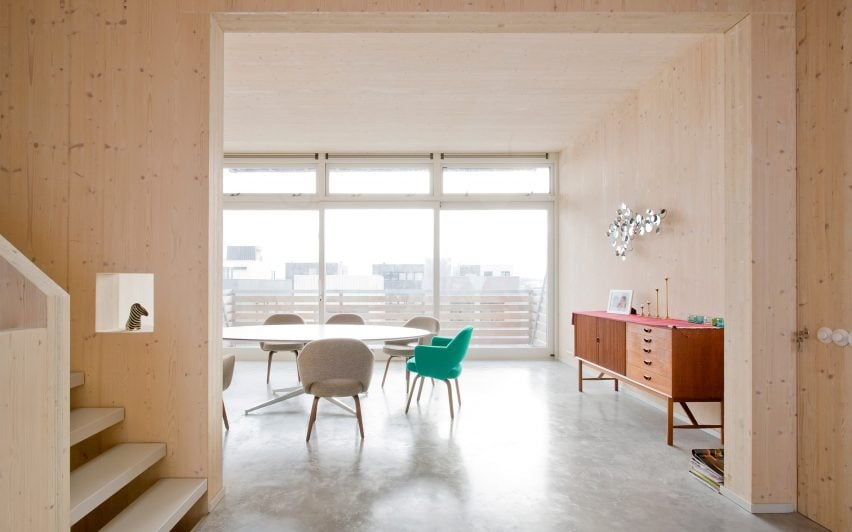
MAATworks references Scandinavian architecture with wooden townhouse in Amsterdam
Panels of cross-laminated pine form an angular staircase at the heart of this Amsterdam townhouse by MAATworks, which features a bright red facade.
Local studio MAATworks designed the five-storey house to slot into a thin plot in the IJburg district of the Dutch city.
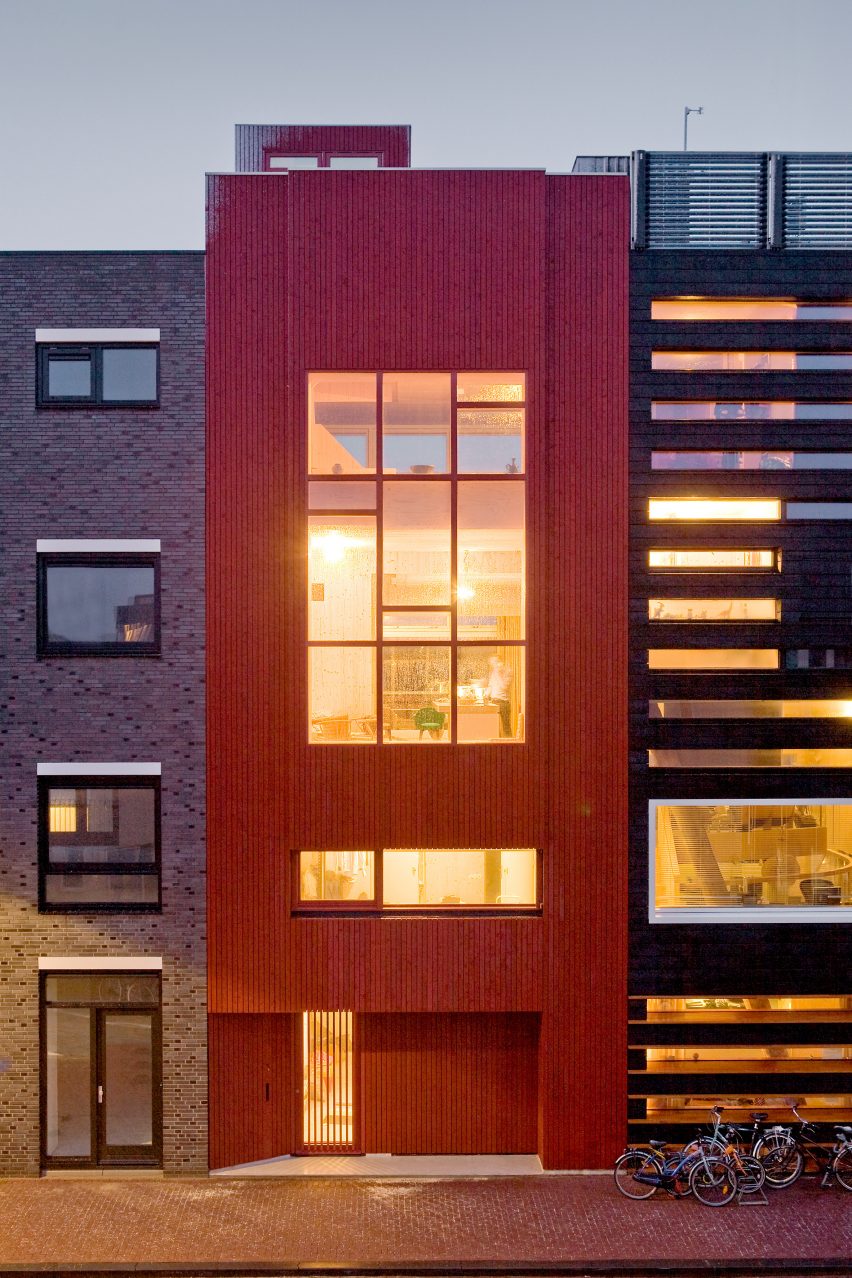
The architects were asked by their clients to reference the wooden residences typically found in Scandinavia. They constructed the residence from panels of engineered pine wood and named it Houten Herenhuis, which means wooden house.
The interior features exposed pine wood walls and ceilings, as well as a thick stair banister that dog-legs up through the floors. The all-pine finishes are intended to lend the interior the appearance of having been carved from wood.
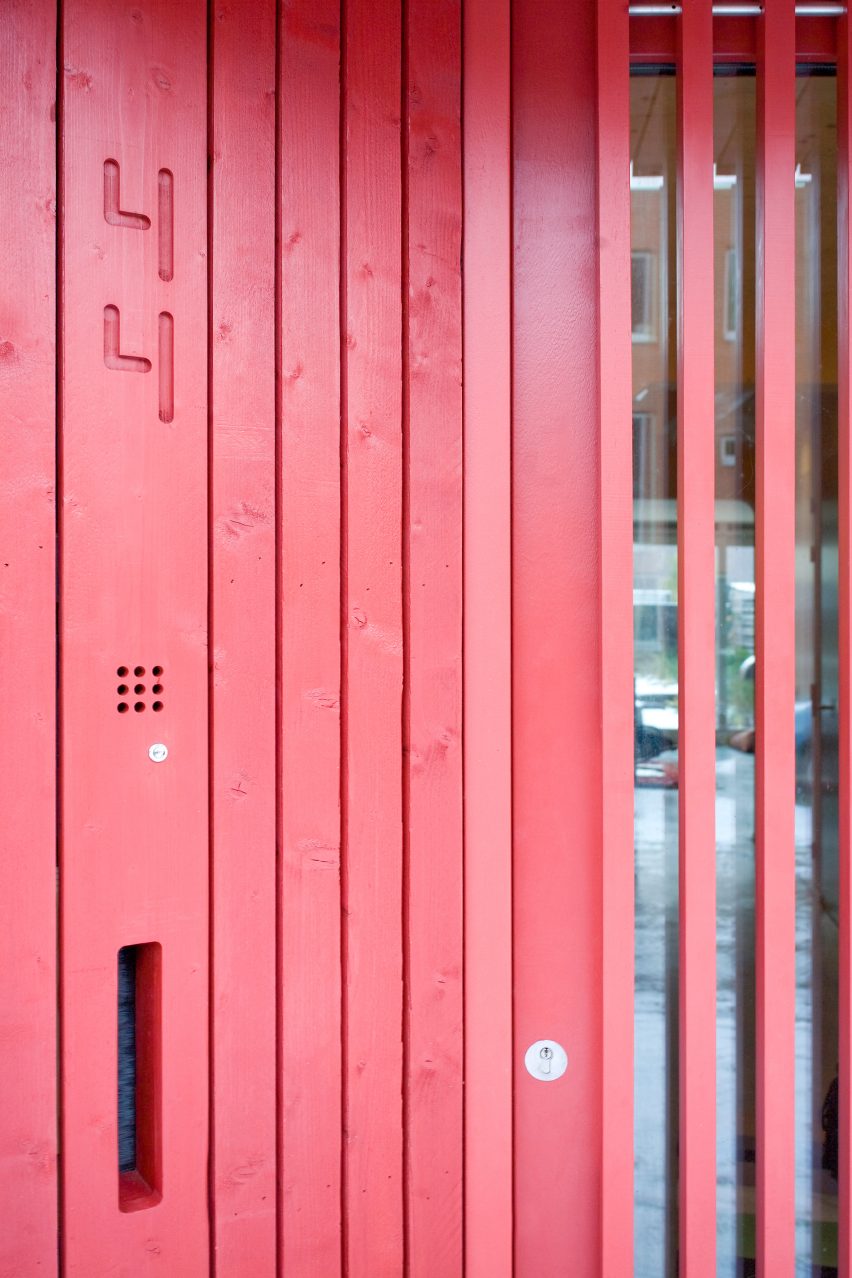
The facade of the house is made up of thin strips of wood, which are painted bright red. The choice is a reference to Falu red cladding – a vibrant red wood stain and preservative typically used on Scandinavian buildings.
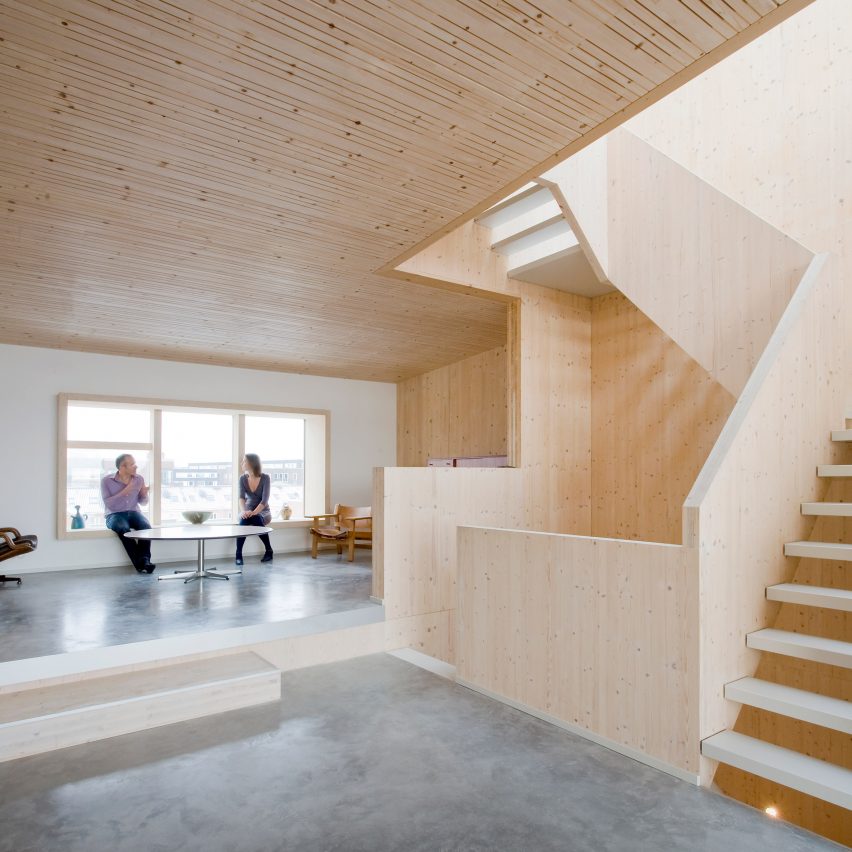
"Our clients loved the traditional Scandinavian houses," architect Lidewij Lenders told Dezeen. "Primarily in this design the use of timber, a material that is not commonly used in the Netherlands, brings the Scandinavian atmosphere."
"Besides, we used Scandinavian red for the facade, but in a modern way so that it fits in with the street in the young IJburg district," she continued.
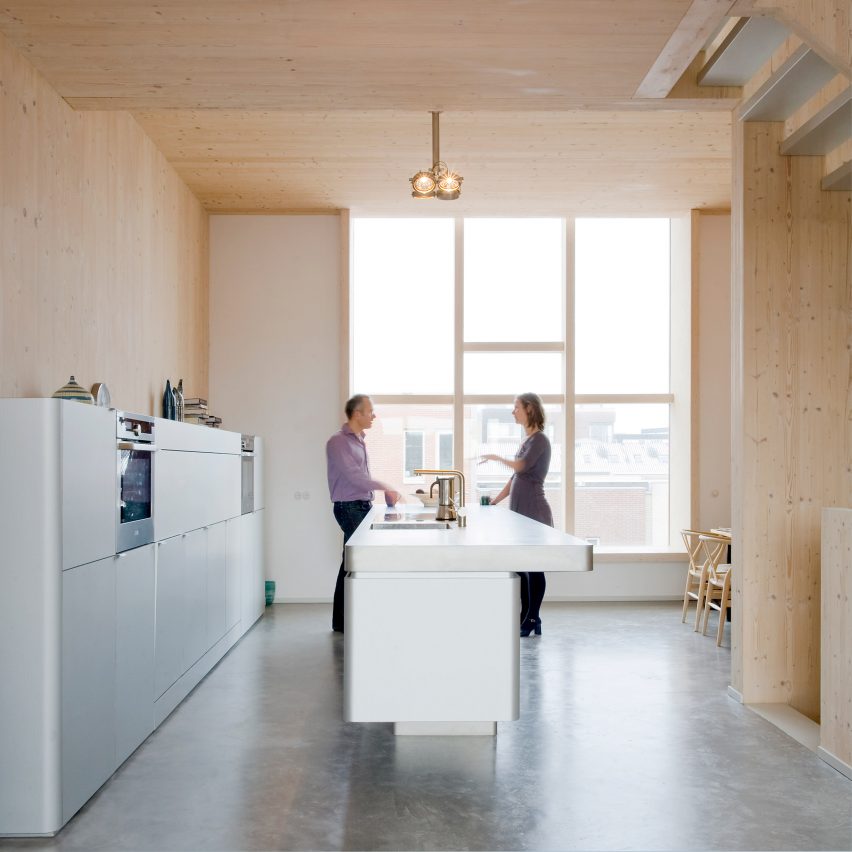
The architects employed three types of engineered wood to build the house – a more sustainable alternative to concrete and steel that is becoming increasingly popular.
Glue-laminated timber, known as glulam, and cross-laminated timber (CLT) are used for the main structure.
Glulam is manufactured by layering up multiple slices of wood and gluing them together, while CLT is produced in a similar way but involves arranging the layers at right angles. Both are significantly stronger than regular wood.
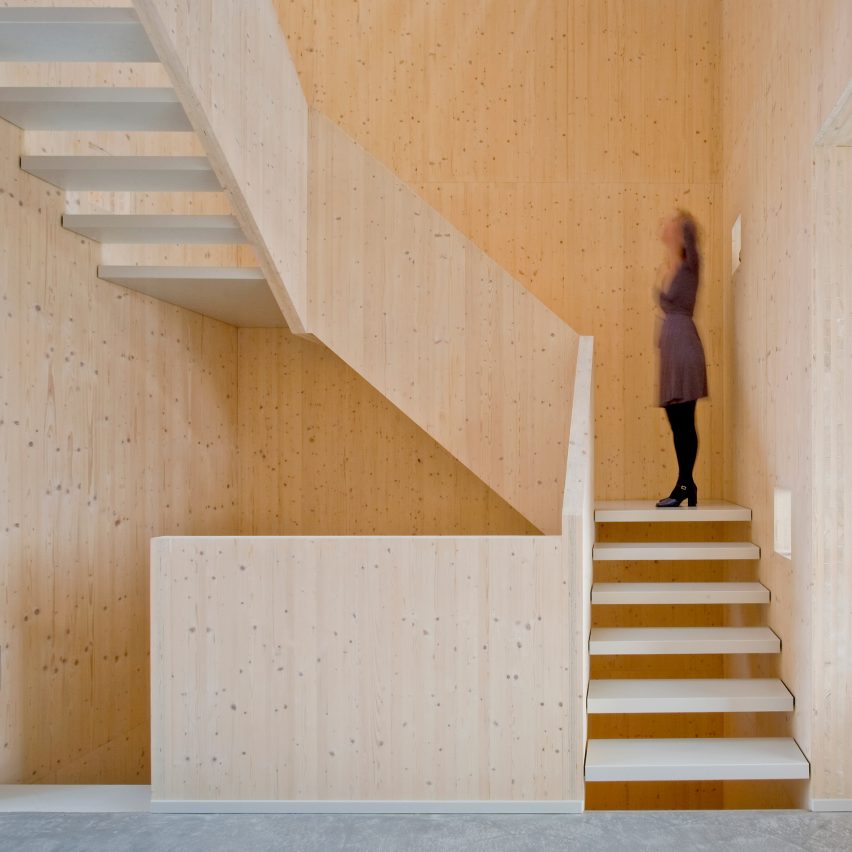
The staircase is placed against a wall in the middle of the space to create a division between different areas. Two walls with square cut-outs offering views into these areas flank the staircase, which is topped by a skylight to ensures each of the five floors receive plenty of light.
"Via a large skylight and several small openings in the stairwell, daylight penetrates deep into the house, an effect that is further enhanced by the floor-by-floor widening of the stairwell as it rises," said the architect.
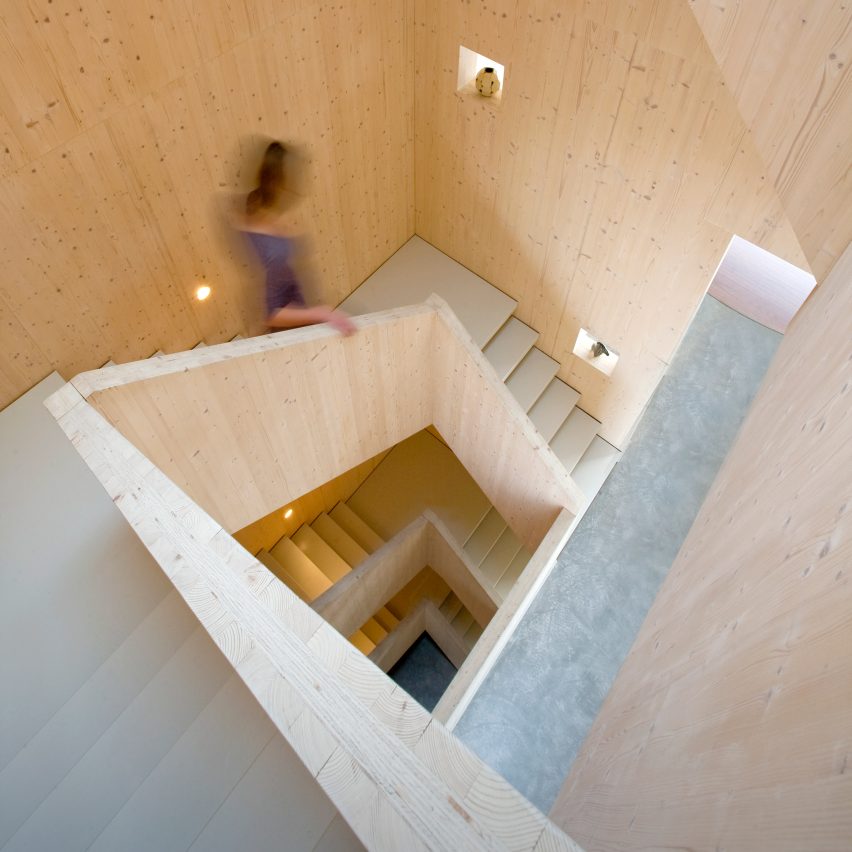
The red facade is made up from thin layers of glued timber known as laminated veneer lumber.
A two-storey window cut through it provides views across the city from a split-level living room on the third floor and a combined kitchen-diner on the level below. Window seats are integrated into both floors so the residents can admire the scene.
The open-plan kitchen and dining room are finished with curved metal cabinets and an island.
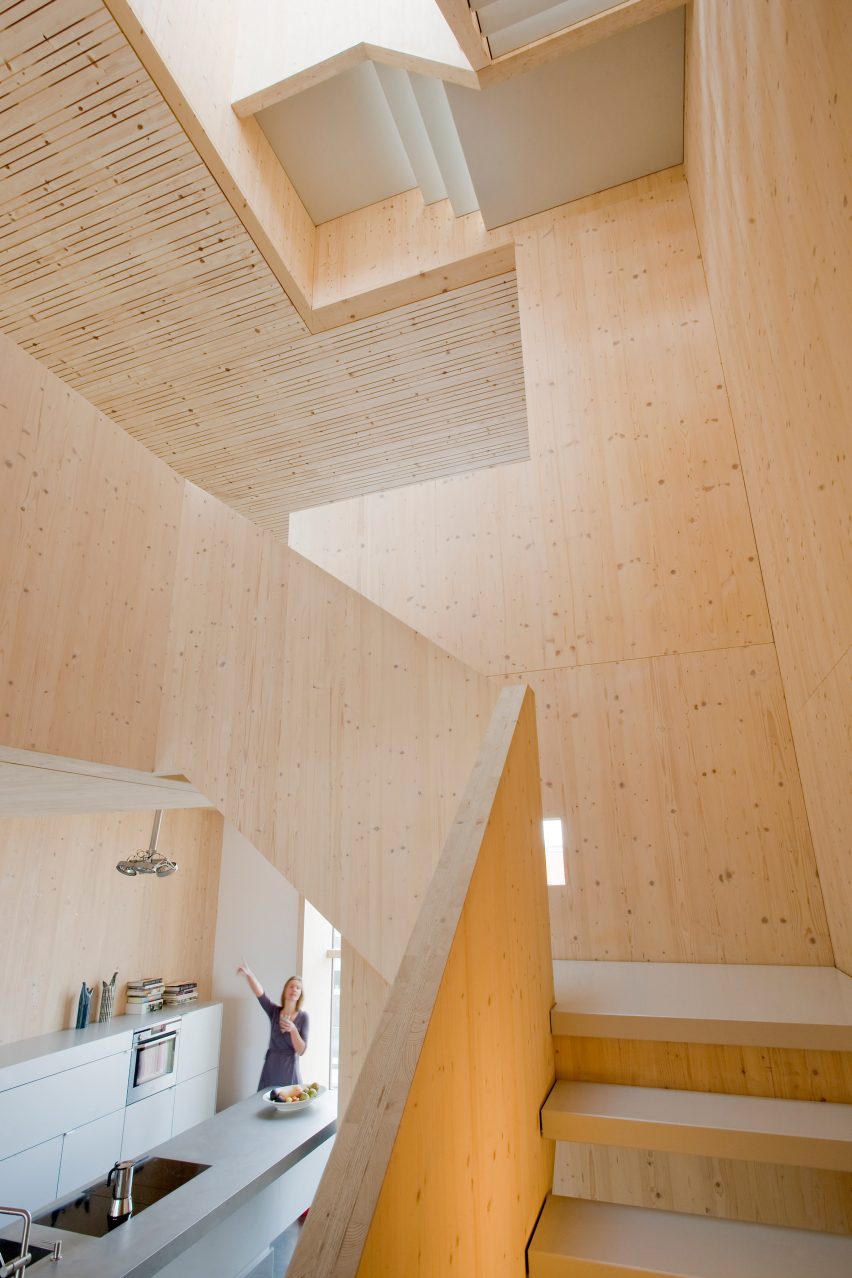
Two bedrooms occupy the first floor, while a studio and entrance hall are placed at ground level.
The pine wood panels are treated with a coating of lye to counteract the pine's tendency to yellow over time. The rest of the house is finished simply, including floors covered with fair-faced concrete and white-grey doors.
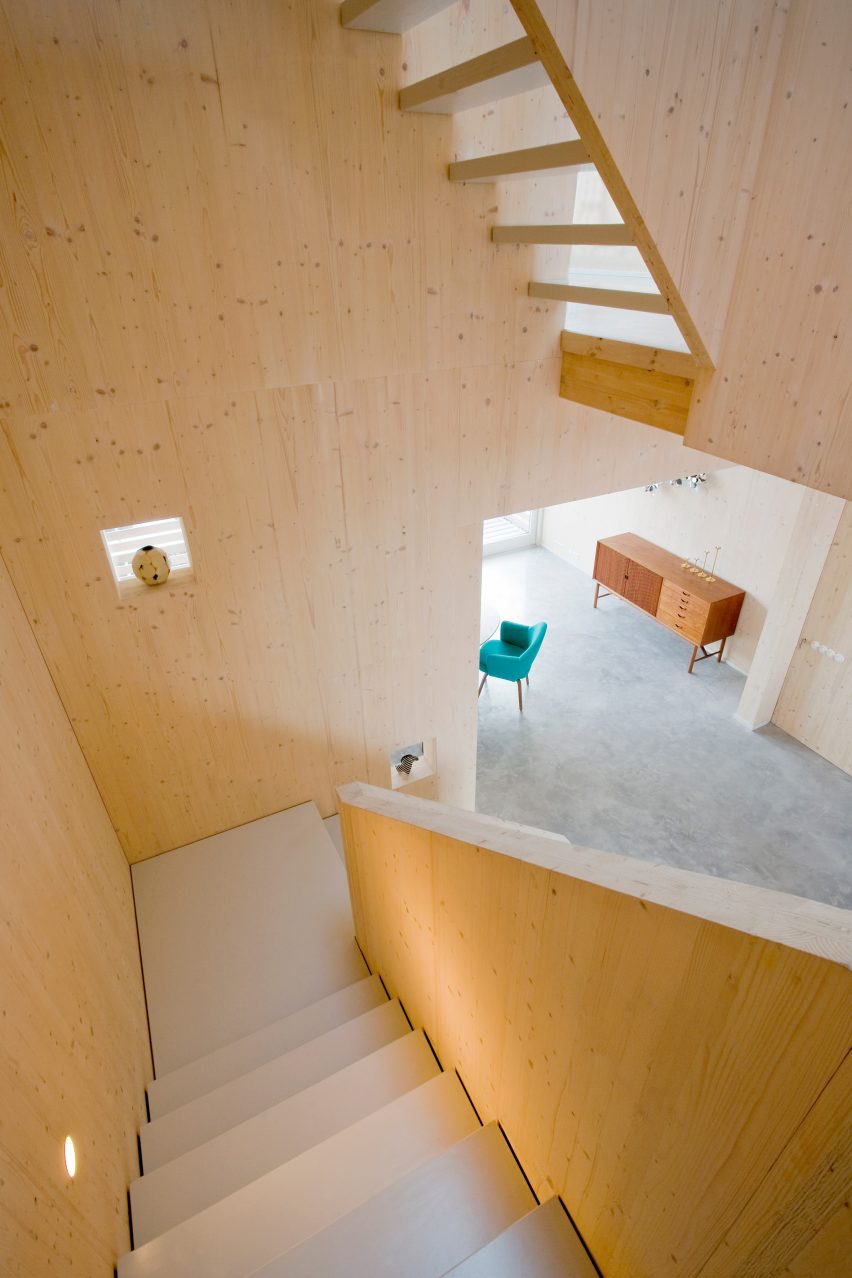
The design also employs passivhaus principles. Large expanses of south-facing glazing ensure that solar heat is retained in winter, while balconies and a roof overhang above the terrace form shading to prevent overheating in summer.
Houten Herenhuis is the latest example of timber's resurgence as a building material, which architects are calling "the new concrete".
Other projects using engineered timber include a slender apartment block by Amin Taha Architects, a lakeside observation pavilion by OOPEAA and a Shakespearean-style theatre in by Andrew Todd Architects.
Photography is by Marcel van der Burg.
Project credits:
Architect: MAATworks
Project architect: Lidewij Lenders
Contractor: Kerkhofs Houtbouw, Henrik-Ido-Ambacht
Structural engineer: Raadschelders-Bouwadvies
Interior designer: MAATworks
Kitchen units and sanitary ware: Studio Kwest